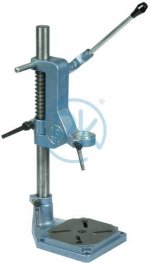How often do you guys change the speed? But I agree if it is electronic, one would probably change it more often.
I know there're drill speed charts that some people follow to the dot, but I have never done that. From a practical point of view, is that really necessary for woodworkers (who are not machinists)? I change mine may be once every few years, and have not observed ANY negative effects on my cheap, old drill press or on the quality of holes. I never had a case where a hole bored were too loose for a rod or dowel -- one possible sign of run-out.
I believe I set the speed to the second lowest (?), if not, the third lowest at all times, and use it with twist bits, Fornster bits, etc. That's also how the two woodworking schools (one for adults, one for high school kids) I know have set theirs.
Last week, I did have to change the speed on my DP (for using a 1" tenon cutter), and it took under 1 minute because I had to read the pulley diagram on the machine (under 30 seconds if I had done that more often [tongue]).
Anyway, no matter how great a DP is, make sure you get a quality set of drill bits to match it.


